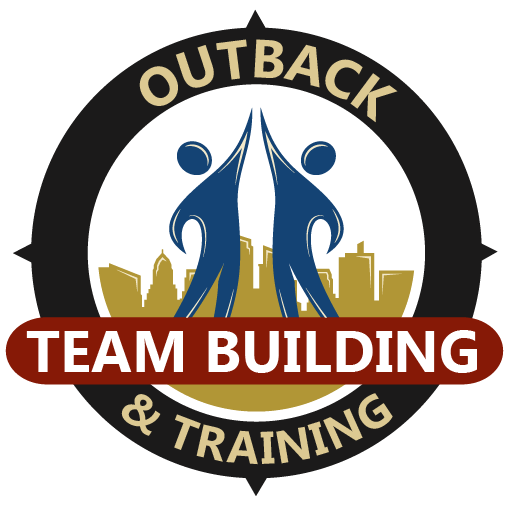Strong employee loyalty and retention can help bolster office morale and your bottom line. Find out five effective strategies you can use to help keep your team happy, engaged, and working at your company.

Strong employee loyalty and retention can help bolster office morale and your bottom line. Find out five effective strategies you can use to help keep your team happy, engaged, and working at your company.
Low employee loyalty is an issue that organizations can’t afford to ignore, with almost 47% of HR professionals stating retention as the top management challenge, according to SHRM.
In this article, you’ll learn about how you can improve employee loyalty by:
- Building a Strong Performance Management System
- Offering Perks and Benefits that Employees Want
- Providing Career Growth Opportunities
- Encouraging Colleague Comradery and Culture
- Allowing Flexible Work Options
The Work Institute’s 2019 Retention Report also shares that 41.4 million U.S. workers voluntarily left their jobs in 2018, which cost organizations $617 billion – approximately $15,000 per employee.
Add that substantial financial loss to the negative impact turnover typically has on company morale, and it's clear that HR and leadership teams should be focusing on retention and employee loyalty.
Continue reading to learn more about the strategies you can implement to keep your team satisfied in their roles and dedicated to your organization.
5 Tactics to Improve Employee Loyalty
Regardless of the size of your HR team or the number of employees at your company, here are five effective strategies that can help you hold onto your top talent.
1. Building a Strong Performance Management System

In their Employee Retention Report, TINYpulse shares that when employees feel that their manager isn’t good at their job, they are four times more likely to quit. This means that in order to retain your team, you need to support your managers in being effective leaders.
One way to do this is by implementing a structured management system, in which managers and employees are continuously aligned on performance expectations.
Here’s how you can build an effective system within your organization:
- Meet Consistently: Ask leaders to hold weekly touch-bases with their employees to check in, answer any questions, and help overcome roadblocks. Team members should also connect with their boss on a monthly basis for a more official review of what employees have accomplished that month.
- Create a Performance Agreement: Ahead of the upcoming quarter, half, or year, ask leadership to meet with team members to build out the deliverables and tasks that individuals will be responsible for during that period. A document like this should be flexible to change and available online, so that both employees and managers can edit and access it. Cloud-based platforms, such as Smartsheet or SharePoint, are great tools for this purpose.
- Make Goals S.M.A.R.T.: Encourage all employees to create goals around being S.M.A.R.T. - that is specific, measurable, attainable, realistic, and timely. You could even provide each employee with a template for Performance Agreements that includes sections ensuring tasks are S.M.A.R.T. and well-defined. For example, a S.M.A.R.T. deliverable could be "increase website traffic by 10% by the end of Q2.”
- Ask for Two-Way Feedback: At the end of an employee review, request that team members share any feedback they may have with their manager. This can help leaders better understand areas of frustration or improvement, preventing small things from becoming larger issues. You can also provide anonymous employee surveys to capture input from individuals who would rather remain nameless. Read our article on Employee Engagement Survey Questions, Template, and Tips for more insight on the topic.
- Provide Leadership Training: Help your management team hone their skills with professional development programs like Performance Management Fundamentals or Productive Feedback & Performance Reviews. This can help your leaders grow, while also providing employees with effective and impactful performance management.
2. Offering Perks and Benefits that Employees Want

Providing a perks and benefits package just for the sake of doing so can be a huge waste of your budget, and it won't necessarily help entice your employees to stick around.
In one of our recent blog posts, we looked at popular benefits that can help with employee loyalty. The top six perks and benefits that Fortunate 500 companies like Netflix and Starbucks use include:
- Helping employees give back
- Providing bonus time off
- Organizing group activities
- Encouraging health and fitness
- Offering flexible work options
- Supporting educational opportunities
To learn more about each of these sought-after benefits, read: 6 Retention-Boosting Perks at Work Used by 11 of the World's Biggest Companies.
3. Providing Career Growth Opportunities

The 2018 Workplace Learning Report from LinkedIn suggests that a staggering 93% of employees would continue working at their current organization if it invested in their careers.
This means that providing upward career mobility to your team members is one of the most critical ways that you can help build employee loyalty. You can offer individuals the opportunity to grow within your company by:
- Structuring Career Ladders: Meet with the leaders of every department and build out the different roles and promotions that could be available within each team. For example, some roles could be split out into junior and senior titles. You could also offer tiered management positions, such as project managers or assistant managers. Once you’ve decided on the available roles within departments, make your career ladders visible to employees, so that individuals are aware of what’s possible in terms of their growth within your organization. You can send it out in a company-wide memo, or ask leaders to share it in one-on-one or team meetings.
- Promote from Within: Not only is it more expensive to recruit candidates from outside of your business, it’s also less effective. According to a study shared by Glassdoor, when compared to internal promotions, external hires are 61% more likely to be fired in the first two years and are 21% more likely to quit. When looking at internal candidates, keep an eye out for cross-departmental opportunities and ensure that you share the position with everyone, regardless of their role. Just because an employee doesn’t work in the department you’re hiring for, doesn’t mean that you shouldn’t consider them!
- Training and Development: If you don’t have internal positions available to promote employees in to, you can also offer growth opportunities through training and development. Here are a few of the top-recommended programs for corporate groups looking to hone their skills:
- Conflict Resolution: Help your team learn how to turn a negative clash with a colleague into an opportunity to strengthen relationships.
- Emotional Intelligence: You and your team can develop your self-awareness and social skills with this development program.
- Practical Time Management: With this training program, your team will learn how to minimize distractions and make the most of their time at the office.
- Clear Communication: Become effective communicators by developing both verbal and written skills.
- The Power of Negotiation: Discover the tools and techniques that can help your team become powerful negotiators.
- Conflict Resolution: Help your team learn how to turn a negative clash with a colleague into an opportunity to strengthen relationships.
4. Encouraging Colleague Comradery and Culture

A SHRM/Globoforce Survey suggests organizations with “human-centered approaches in the workplace,” such as recognition associated with core values and celebrating life events, can help with retention.
Unsure of how to strengthen employee relationships and create a thriving company culture at your organization? On our blog, we’ve recently shared insight from Outback’s online community about what individuals are looking for, such as:
- An open-door policy
- Flexibility and freedom
- Group outings and team building activities
- A set of company core values
Find out what else our panel of contributors had to say by reading How to Build the Corporate Culture Your Employees Really Want.
5. Allowing Flexible Work Options

Another survey by SHRM states that 80% of people would be more loyal to their employers if they had flexible work options. In fact, over 25% of employees said that they would take a 10% to 20% pay cut in exchange for a flexible work arrangement.
In addition to showing your team that you trust them, flexible work options can also make employees’ lives easier – both of which can help boost feelings of loyalty.
Enabling employees to have more freedom in their work schedule can take on many forms. Depending on your organization, you may choose to offer your team any – or all – of the following to help instill loyalty:
- Work-from-Home Days: Whether you allow your team to work remotely one, two, or even five days a week, this option offers minimal disruption for departments who don’t necessarily need to be in the same office space all day, every day.
- Flex Hours: Some companies, such as Netflix, allow their employees to work only the hours that they need to complete their deliverables. This means that they don’t necessarily expect individuals to work a 40-hour work week if everything gets done.
- Adjustable Workday: If your team doesn’t need to be in the office or online from 9:00 am to 5:00 pm, why not offer them the choice to work the hours that fit their schedule. You can choose whether employees select a consistent timeframe or are free to come and go as they please, as long as they fulfill their hours.
For more insight on this topic, check out our online guide: The What, Why, and How of Building a High-Performance Remote Team.
Retention Resources for HR Professionals
If you’re in search of additional resources to help you earn lasting employee loyalty, here are some of the top links that our team recommends:
- Employee Engagement Survey Template: Use this survey template to routinely check in with your team and better understand what they’re looking for from your organization.
- Society for Human Resource Management (SHRM): Join over 300,000 HR and business professionals as a member for access to a broad spectrum of reports, guides, and tools.
- Office of Human Resources Management (United States): Here, you'll find an array of forms, policies, and handbooks, available for the human resources community and employees.
- Human Resources Management (Canada): An online services and information hub offered by the Government of Canada.
Learn More About Training and Development for Your Group
For more information about how training and development can benefit your group, reach out to our Employee Engagement Consultants.


